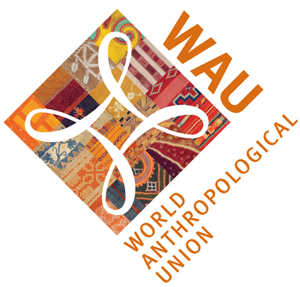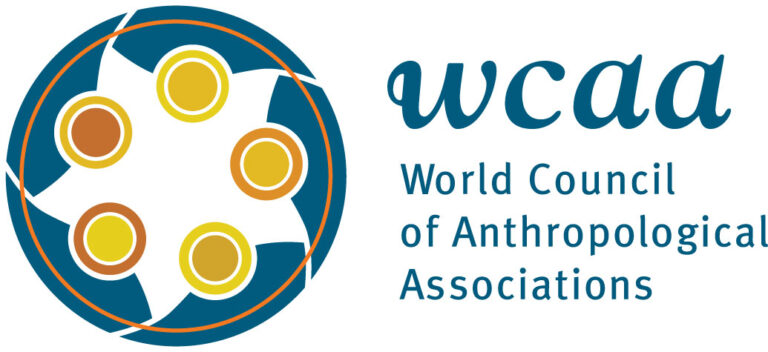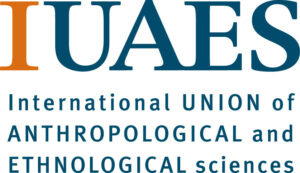
Temudo, Marina Padrão. 2019. “Between ‘forced marriage’ and ‘free choice’: social
transformations and perceptions of gender and sexuality among the Balanta in Guinea-Bissau.” Africa: The Journal of the International African Institute 89(1): 1-20.
African women are frequently portrayed as a subaltern group in need of external support, used as property in forging social relations, producing wealth in people and doing most of the agricultural work to feed household members in societies where ‘modernization’ does not always seem to change their unfortunate predicament. This article destabilizes such narratives by showing the complexities of marriage practices and the difficult dialectics between freedom and subjugation in one West African agrarian society – the Brasa-speaking people of Guinea-Bissau. Among this patrilineal and virilocal group, marriage was usually arranged at birth or when girls were still small children. However, after marriage, women enjoyed great freedom of movement to have distant sexual partners and to pursue private profit-making activities. Paradoxically, while at present most young women are allowed to marry a young husband of their choice, having lost the support of their descent groups they are becoming more subjected to their husbands’ power and control.
On présente souvent les femmes africaines comme un groupe subalterne dépendant d’un soutien extérieur, utilisées pour forger des relations sociales, produire de la « richesse en personnes » et faire l’essentiel du travail agricole pour nourrir leur famille dans des sociétés dans lesquelles la « modernisation » ne semble pas toujours changer leur difficile condition. Cet article déstabilise de tels récits en montrant les complexités des pratiques du mariage et la dialectique difficile entre liberté et subjugation au sein d’une société agraire d’Afrique de l’Ouest, les locuteurs du balante de la Guinée-Bissau. Dans ce groupe patrilinéaire et virilocal, le mariage était généralement arrangé à la naissance ou pendant la petite enfance des filles. Néanmoins, après leur mariage, les femmes jouissaient d’une grande liberté de mouvement leur permettant d’avoir des partenaires sexuels éloignés et de poursuivre des activités lucratives privées. Paradoxalement, alors qu’actuellement la plupart des jeunes femmes sont autorisées à épouser un homme jeune de leur choix, le fait qu’elles aient perdu le soutien de leur groupe de filiation les rend plus soumises au pouvoir et au contrôle de leurs époux.
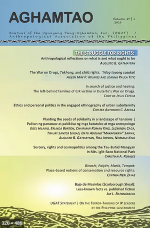
Arcilla, Chester Antonino C.. 2019. “ETHICS AND PERSONAL POLITICS IN THE ENGAGED ETHNOGRAPHY OF URBAN SUBALTERNITY.” Aghamtao 27(1): 57-87.
In this paper, I reflect on the ethical dilemmas of engaged ethnography with urban subalterns. Subalternity is a condition of exclusion and silence suffered by populations occupying a space of subordination and difference, outside of those occupied by rights-bearing citizens and possessors of the grammars of knowledge. When subalterns struggle to protect their homes and livelihood in the midst of fragmented socialities and competing claims among people’s organizations, ethical choices of an engaged ethnographer become evidently political. This necessarily privileges a particular representation of space, being, and temporality, that in turn affects access to different knowledges and spaces. Within this intricate urban subaltern politics, I relied for guidance less on academic ethical standards, and more on constant reflexivity of my personal political convictions and on democratic dialogues with subaltern communities. When the researcher struggles to become a political partner of subaltern-historians, ethnography diverges from academic and funding frames and transforms lives toward subaltern-scholar solidarities and liberative knowledge mobilization.

Little, Peter C.. 2019. “Cuerpos, toxinas e intervenciones laborales con residuos electrónicos en Ghana: ¿Hacia una corporalidad tóxica? (BODIES, TOXINS, AND E-WASTE LABOUR INTERVENTIONS IN GHANA: TOWARD A TOXIC
POSTCOLONIAL CORPORALITY?)”. AIBR Revista de Antropología Iberoamericana 14(1): 51-71.
Este artículo explora la experiencia vivida de los trabajadores de residuos electrónicos (ewaste) en Agbogbloshie, un centro primario de reciclaje de desechos electrónicos y un mercado de chatarra en Accra, Ghana, que ha sido descrito como uno de los lugares más contaminados de la Tierra. Para formular una comprensión más crítica y contextual de las vidas de estos trabajadores y su experiencia corporal tóxica, el artículo presenta el concepto de «corporalidad poscolonial tóxica», un término que se despliega para navegar y afrontar la controvertida intersección entre cuerpos, toxinas e intervenciones de reciclaje «verde» en un desguace urbano poscolonial. Después de presentar las dimensiones sociales, económicas y tóxicas de Agbogbloshie, este artículo trata en general sobre los problemas y las políticas de la permeabilidad tóxica, y en particular sobre las fronteras precarias de los cuerpos, ambientes y prácticas de mitigación de riesgos en un contexto poscolonial. Se argumenta que la corporalidad poscolonial tóxica proporciona una perspectiva crítica de la salud ambiental, que puede informar a los compromisos antropológicos con las vidas que navegan por los mundos permeables y entrecruzados de la contaminación y la poscolonización.
This article explores the lived experience of electronic waste (e-waste) workers in Agbogbloshie, a primary e-waste recycling center and scrap metal market in Accra, Ghana, that has been described by international environmental organizations as one of the most polluted places on Earth. To formulate a more critical and contextual understanding of the lives of these e-waste workers and their embodied toxic experience, the article introduces the concept of “toxic postcolonial corporality”, a term deployed to navigate and confront the contentious intersection of bodies, toxins, and “green” recycling interventions in a postcolonial urban scrapyard. After introducing the social, economic, and toxic dimensions of Agbogbloshie, I discuss the problems and politics of permeability in general and the precarious boundaries of bodies, environments, and risk mitigation practices in a postcolonial context in particular. It will be argued that the notion of toxic postcolonial corporality offers a possible critical environmental health perspective that can inform anthropological engagements with the embedded lives navigating the permeable and intersecting worlds of pollution, postcolonization, and decontamination.
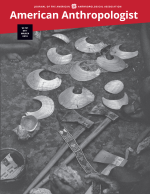
Kawa, Nicholas C., Jose´ A. Clavijo Michelangeli, Jessica L. Clark, Daniel Ginsberg, and Christopher McCarty. 2019. “The Social Network of US Academic Anthropology and Its Inequalities.” American Anthopologist 121(1): 14-29.
Anthropologists often call attention to the problems posed by social inequality, but academic anthropology also reproduces many of the very inequalities that its practitioners work to critique. Past research on US academic hiring networks has shown evidence of systematic inequality and hierarchy, attributed in significant part to the influence of academic prestige, which is not necessarily a reflection of merit or academic productivity. Using anthropology departments’ websites, we gathered information on all tenured and tenure-track faculty in PhDgranting anthropology programs in the United States, totaling 1,918 individuals in all. For each faculty member, we noted their current institution and PhD-granting institution, which we treated as a “tie” between those academic programs.With those data, we applied both statistical and social network analysis (SNA) methods to explain variation in faculty placement as well as the network’s overall structure. In this article, we report on our findings and discuss how they can be used to help rethink academic reproduction in American anthropology.
Antropólogos a menudo llaman la atención sobre los problemas planteados por la desigualdad social, pero la antropología académica también reproduce muchas de las mismas desigualdades que sus profesionales trabajan para criticar. Investigaciones pasadas sobre redes de contratación académicas en los Estados Unidos han mostrado evidencia de desigualdad y jerarquía sistemáticas, atribuidas en parte significativa a la influencia del prestigio académico, lo cual no es necesariamente un reflejo de mérito o productividad académica. Utilizando los sitios web de departamentos de antropología, recopilamos información sobre todo el profesorado titular y en proceso de titulación en programas de antropología otorgando doctorados en los Estados Unidos, totalizando 1.918 individuos. Por cada profesor, notamos su actual institución e institución que le otorgó el doctorado, lo cual tratamos como un “vínculo” entre esos programas académicos. Con esos datos, aplicamos tanto métodos de análisis estadístico como análisis de red social (SNA) para explicar la variación en la colocación de los profesores, así como también la estructura general de la red. En este artículo, reportamos nuestros hallazgos y discutimos cómo se pueden usar para ayudar a repensar la reproducción académica en la antropología americana.
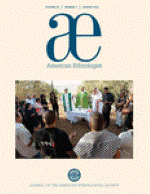
Ahmann, Chloe. 2019. “Waste to energy: Garbage prospects and subjunctive politics in late-industrial Baltimore.” American Ethnologist 46(3): 328-342.
Interview with author: https://americanethnologist.org/features/interviews/ae-interviews-chloe-ahmann
If it had been built, the Fairfield Renewable Energy Project would have been the largest trash incinerator in the United States, burning 4,000 tons of waste each day in late‐industrial Baltimore. When it was first proposed, two discourses of renewal coalesced around the project. One was propagated by technocrats who argued incineration should be regulated as a renewable technology. Another emerged among working‐class whites who hoped the plant would reinvigorate their ailing economy. Both discourses hinged on comparisons with the past and maneuvers between futures near and far, gaining ground through subjunctive politics. Recast in this light, both technocratic dreams and local narratives of waste, race, and decline betray a deep ambivalence about the sorts of futures that seem plausible within a geography of “undesirables.”

Barker, John. 2019. “Mixed Grammars and Tangled Hierarchies: An Austronesian-Papuan Contact Zone in Papua New Guinea”. Anthropological Forum 29(3): 284-301.
The article is divided into two parts. In the first, I explore what is known about the precontact history of Collingwood Bay based on archaeological, linguistic, and oral evidence. While much must be left to speculation, the evidence strongly suggests that the Bay has long been a meeting point between Austronesian and Papuan peoples. The second and longer part of the paper attends to the political system found in most Collingwood Bay communities. I focus here primarily on the Maisin-speaking people residing in the southern part of the Bay with whom I’ve worked since 1981. More specifically, I describe how this system incorporates both hierarchical and egalitarian aspects and has proven remarkably adaptable to social changes from the time of European first contact in the 1890s.
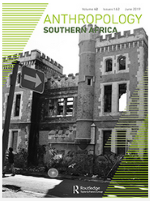
Middelmann, Temba John Dawson. 2019. “Rhythm and connection on Rissik Street: Reflecting on public space research in inner-city Johannesburg”. Anthropology Southern Africa 42(1): 99-113.
This paper explores how entangled layers of use and contingencies of open spaces in downtown Johannesburg, South Africa, relate to their structural, material and symbolic aspects. Reflecting on research at Pieter Roos Park, Constitution Hill and Gandhi Square, this paper emphasises the walking route that connects these three spaces, mostly along Rissik Street. It examines the rhythms of people’s navigation of the city, according to perceptions of fear and safety, opportunity and adversity, and offers an initial understanding of the continuous interaction between structure and agency. It reflects on reading about these spaces, and how this connects with walking and writing about the city, all acts with particular, overlapping rhythms. Interpreting these in relation to each other, and in relation to my own rhythms, provokes questions that unsettle linear and straightforward understandings of time and memory as well as the individual and their connection to the public. Whilst linear rhythms are predominant, subject to the working week, surprising and paradoxical practices frequently punctuate these rhythms. Both rhythms and their disruptions are influenced on a variety of levels, often linked to perceptions, which intersect with lingering histories and memory in layered, complex ways.
Este artigo examina como camadas emaranhadas de usos e contingências de espaços abertos no centro de Johanesburgo, África do Sul, se relacionam com seus aspectos estruturais, materiais e simbólicos. Refletindo sobre uma pesquisa feita no Pieter Roos Park, na Constitution Hill e na Gandhi Square, este artigo destaca a rota de pedestres que conecta esses três espaços, principalmente ao longo da rua Rissik. Examina os ritmos da navegação das pessoas pela cidade, de acordo com percepções de medo e segurança, oportunidade e adversidade, e apresenta uma compreensão inicial sobre a interação contínua entre estrutura e agência. Reflete sobre a produção escrita sobre esses espaços e sobre como isso se relaciona com o andar e o escrever sobre a cidade, todos os atos com ritmos particulares e sobrepostos. Interpretá-los em relação uns aos outros, e em relação aos meus próprios ritmos, provoca questões que perturbam a compreensão linear e direta do tempo e da memória, assim como do indivíduo e sua conexão com o público. Embora os ritmos lineares sejam predominantes, sujeitos à semana de trabalho, práticas surpreendentes e paradoxais frequentemente pontuam esses ritmos. Tanto os ritmos quanto suas rupturas são influenciados em uma variedade de níveis, geralmente ligados a percepções que se cruzam com as histórias remanescentes e a memória, de formas complexas e em camadas.

Schröder, Peter. 2019. “An Episode from the Beginnings of Anthropology in the Amazon: Curt Nimuendajú and the Xipaya Indians--A Research in Adverse Circumstances”. Anthropos 114.2019/2: 343-354.
The German ethnologist Curt Unckel Nimuendajú (1883–1945), who had immigrated to Brazil in 1903, moved his permanent residence to Belém in 1913, where he established professional contacts with the Goeldi Museum. Between 1915 and 1919, he survived by working precarious jobs, but also carried out fieldwork among the Xipaya Indians in quite adverse circumstances. This is an illuminating episode about the beginnings of anthropology in the Amazon, which allows relativizing some stereotypes about the history of anthropology, which are commonly reproduced in social science curricula. In addition, it sheds light upon an anthropology without universities where the influences of German ethnology still prevailed and where texts written by self-educated researchers were still accepted.

Moreno, Lucila and Melina Tobias. 2019. “LUCHAS POR EL ACCESO AL AGUA EN BARRIOS POPULARES DE LA ZONA NORTE Y SUR DEL GRAN BUENOS AIRES, ARGENTINA (FIGHTS FOR WATER ACCESS IN POPULAR NEIGHBORHOODS IN THE NORTH AND SOUTH AREA OF GRAN BUENOS AIRES, ARGENTINA).” Antropología Americana 4(8): 137-167.
El artículo se propone estudiar los reclamos que emergen por el acceso al agua en barrios populares del Área Metropolitana de Buenos Aires. Concretamente interesa ahondar desde una perspectiva centrada en la ecología política, en los procesos de construcción social del riesgo que tienen lugar en estos territorios y el modo en que los propios actores involucrados logran interpelar a los organismos públicos con competencia en la provisión del servicio. De este modo, y a partir del análisis etnográfico en dos localidades del área metropolitana, reconstruimos cómo se producen y redefinen lo que definimos como territorios hidrosociales, donde se ponen en juego disputas por saberes, discursos y distribución vinculados al agua.
The article aims to study the claims that emerge from access to water in popular neighborhoods of the Metropolitan Area of Buenos Aires. Specifically, it is interesting to delve from a political ecology perspective, in the processes of risk social construction that take place in these territories, and the way in which the involved actors manage to question the public organisms with competence in the provision of the service. In this way, and from the ethnographic analysis in two localities of the metropolitan area, we reconstruct how they produce and redefine what we define as hydrosocial territories, where disputes for knowledge, discourses and distribution linked to water are brought into play.
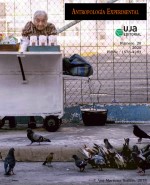
ARENAS, Ángeles and Beatriz PÉREZ GALÁN. 2019. “NATURALEZA, CONSERVACIÓN E IDENTIDAD VERDE EN COSTA RICA (NATURE, CONSERVATION AND GREEN IDENTITY IN COSTA RICA).” Antropología Experimental19(27): 313-330.
Costa Rica es uno de los destinos predilectos del turismo de naturaleza en América Latina y en el mundo. Este trabajo es una reflexión sobre el papel desempeñado por la conservación y la protección de áreas naturales -en especial de los Parques Naturales- en la representación del país, tanto en su proyección externa como en la conformación de su iden-tidad nacional. El objetivo que se persigue es doble: por un lado, indagar sobre el peculiar proceso de patrimonialización de la naturaleza costarricense, sus usos institucionales, económicos y políticos, y su relación con una identidad nacional que diferencia a Costa Rica de otros países de la región al presentarse como una nación moderna, verde, de clase media, blanca, democrática y pacífica. Por otra parte, el artículo busca contribuir a la crítica sobre la deriva neoliberal experi-mentada por el modelo de conservación y desarrollo sostenible y su impacto en la mercantilización de la naturaleza.
Costa Rica is one of the nature tourism favorite destination within America Latina and the world. The current article is a reflection on the importance of protected areas, especially national parks, in the country ́s representation both exter-nal and internal, where plays a role in the conformation of the national identity. The objective pursued by this text is twofold: on the one hand, to inquire about the peculiar process of patrimonialization of the Costa Rican natural envi-ronment, their institutional, economic and political uses, and their relationship with a national identity that differenti-ates Costa Rica from the rest of the region by presenting itself as a modern, green, middle class, white, democratic and peaceful nation. On the other hand, the article seeks to contribute to the criticism of the neo-liberal drift experienced by the conservation and sustainable development model and its impact on the commodification of nature.

Pusceddu, Antonio and Filippo Zerilli (eds). 2019. “Berardino Palumbo – Lo strabismo della DEA”. ANUAC 8(1): 119-192.
International book forum on the volume by anthropologist Berardino Palumbo, Lo strabismo della DEA: Antropologia, accademia e società in Italia [The Goddess' Strabismus: Anthropology, Academy, and Society in Italy], Palermo, Edizioni Museo Pasqualino, 2018, pp. 289. Comments of Mara Benadusi, Michael Blim, Riccardo Ciavolella, Caterina Di Pasquale, Adriano Favole, Noelle Molé Liston, Ivan Severi, Valeria Siniscalchi. With a reply by Berardino Palumbo.
Book forum internazionale intorno al libro dell’antropologo Berardino Palumbo, Lo strabismo della DEA: Antropologia, accademia e società in Italia, Palermo, Edizioni Museo Pasqualino, 2018, pp. 289. Commenti di Mara Benadusi, Michael Blim, Riccardo Ciavolella, Caterina Di Pasquale, Adriano Favole, Noelle Molé Liston, Ivan Severi, Valeria Siniscalchi. Con una risposta di Berardino Palumbo.
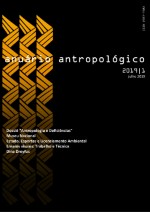
Duarte, Luiz Fernando Dias. 2019. “Museu Nacional: elogio, lamento, augúrio”. Anuário Antropológico 44(1): 13-26.

Uberti, Stefano degli. 2019. “Borders within. An Ethnographic Take on the
Reception Policies of Asylum Seekers in Alto Adige/South Tyrol (Borders within. Etnografia dell’accoglienza e richiedenti asilo in Alto Adige/Südtirol)”. Archivio antropologico mediterraneo 21(2): 1-28.
The “processual turn” in the study of borders has opened up to the analysis of how borders and border regimes, conceived of as social practices, are created/recreated in many ways, for many actors, at any place and time; however, this perspective still coexists with traditional approaches to borders, characterized by a fixation with the notion of border only as a tangible entity, the physical outcome of political, social and/or economic processes. These studies develop through sophisticated and erudite conceptual analysis, not always balanced by equal empirical anchorage. Conversely, based on an ethnographic account of asylum seekers’ reception policies in Alto Adige/Südtirol, the article empirically frames the concept of “border” by retracing the experiences of the so-called “out-of-quota” asylum seekers (profughi fuori quota/Asylbewerber fuori quota) in light of their categorization prompted by local policy and media discourses. The author unveils the performative dimension of labelling practices by arguing that these not only fuel misrepresentation but translate into bordering practices that exacerbate juridical and social vulnerability and hinder access to reception facilities and welfare services.
La “svolta processuale” negli studi sui confini ha aperto all’analisi di come i confini e i regimi di confine, in quanto pratiche sociali, siano prodotti e si riproducano sotto una pluralità di forme, coinvolgendo molti attori e in una molteplicità di tempi e luoghi; tuttavia, questa prospettiva coesiste ancora con approcci tradizionali allo studio dei confini, caratterizzati dall’adozione di una nozione rigida di confine inteso esclusivamente come realtà fisica e tangibile, esito di processi politici, sociali e/o economici. Questi studi si sviluppano attraverso articolate ed erudite analisi concettuali che tendono a non essere bilanciate da un corrispondente ancoraggio empirico. Di contro, prendendo le mosse da un’etnografia delle politiche di accoglienza verso le persone richiedenti asilo in Alto Adige/Südtirol, l’articolo elabora un’analisi empirica del concetto di “confine” ripercorrendo le esperienze dei cosiddetti “profughi fuori quota” (Asylbewerber fuori quota) alla luce dei processi di categorizzazione promossi dagli attori politici e da alcuni media locali. L’autore svela la dimensione performativa delle pratiche di etichettamento, dimostrando come non contribuiscano ad alimentare soltanto distorte rappresentazioni dei richiedenti asilo, ma si traducano in pratiche di bordering che acuiscono la vulnerabilità giuridica e sociale e ostacolano l’accesso alle strutture di accoglienza e ai servizi di assistenza sociale.
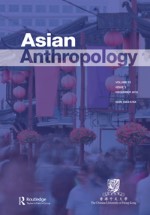
Cody, Sacha. 2019. “‘A new consciousness of the countryside’? Elite ruralism in contemporary China”. Asian Anthropology 18(1): 21-36.
This article discusses an elite form of ruralism in contemporary China. Using ethnographic material collected at two sustainable farming events, it introduces the intellectuals who organize these events as well as the urban residents who attend. Ruralism—the idea that ‘real’ China is found in the countryside, not the city—legitimates intellectuals’ narrative of Chinese nationhood as modern yet in touch with its cultural heritage and offers the promise of rediscovery and starting afresh to urban attendees, the majority of whom were born in the countryside. While elite ruralism sidesteps engaging rural residents and raises questions of representation, it also illuminates processes of demographic pluralization in the Chinese countryside, a trend observable elsewhere in Asia.

Beck, Brenda E.F.. 2019. “Resistance versus Rebellion in a South Indian Oral Epic.
Two Modes of Opposition to an Expansionist, Self-Aggrandizing, Grain-Dependent State”. Asian Ethnology 78(2): 311-339.
This article discusses a medieval South Indian folk epic that focuses on several local groups’ resistance to their paddy-growing neighbor, a Chola kingdom. Artisans and hunters both opposed the introduction of plow-based farming to an area where trade, rain-fed subsistence farming, and animal herding defined the local economy. An ancient oral legend supports noted historian James Scott’s proposal that widespread resentment accompanied the growth of such grain-based power centers. This occurred in many other places as well, especially early Mesopotamia. The Chola monarchy described in this author’s oral source developed later but illustrates a similar pattern. When an ambitious king sent out pioneer plowmen, hoping to introduce systematic plowing to an upland area, there was protest. This unique story provides an alternative source of history by centering around one outlying, farm-based family. By the third generation these heroes became rebels, diering from earlier non-farming resisters of change. Eventually these men, descendants of the original pioneer family, killed the reigning Chola. They rebelled against the disrespect that the successor of that first Chola ruler now displayed, despite the consistent loyalty their father and grandfather had exhibited. The ancestors of the story’s two heroes had in fact succeeded in making farming this area’s new, and now primary, means of subsistence.
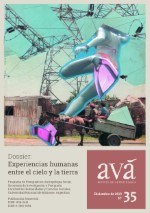
Mudrik, Armando. 2019. “LUNA E IDENTIDAD ENTRE MIGRANTES
EUROPEOS Y SUS DESCENDIENTES EN EL SUR DE LA REGIÓN CHAQUEÑA ARGENTINA.” AVÁ35: 181-212.
En este trabajo se aborda desde la óptica de la astronomía cultural, el estudio de ideas y prácticas elaboradas en torno a la luna entre migrantes europeos y sus descendientes radicados durante el proceso de colonización del sur de la región chaqueña argentina, desde la segunda mitad del siglo XIX hasta mediados de siglo XX. Del análisis de estas ideas y prácticas astronómicas recogidas, se desprende, por un lado, cómo los colonos y sus descendientes han entendido el cielo de manera general, cómo lo han observado y las metáforas o modelos a las que han recurrido en diferentes contextos para darle sentido. Por otra parte, también se evidencia la importancia que las relaciones entre los distintos colectivos de migrantes europeos y, entre estos y otros grupos sociales presentes en la región como criollos y aborígenes chaqueños, han tenido en los procesos de construcción de identidad y conocimiento celeste en este contexto del Chaco argentino.
This is a cultural astronomy study about practices and ideas regarding to the Moon, among European migrants and their descendants, who settled like colonists in the southern area of the Argentinean Chaco. These colonists arrived among waves of immigration occurring in Argentina in the second half of the nineteenth century and the first half of the twentieth century. Through the analysis of these astronomical knowledge, it is clear, on the one hand, how the colonists and their descendants have understood the sky in a general way, how they have observed it and the metaphors or models to which they have resorted in different contexts to make sense of astronomical objects and events. Moreover, ideas and practices collected, also tell us about the importance that relations between the different migrants, and relations between migrants and other social groups present in the region addressed, like chaqueños aboriginal groups and criollos, had in the construction of identity and celestial knowledge by the colonists.

Morillo Arapé, Alonso. 2019. “POLÍTICAS DE VIVIENDA INDÍGENA EN VENEZUELA (2007-2013): ENTRE LA DOMINACIÓN Y NEOCOLONIZACIÓN (Policies of indigenous housing in Venezuela (2007-2013): between the domination and neocolonization).” Boletín Antropológico 37(98): 502-535.
El presente artículo identifica las acciones estatales en el hábitat y vivienda de los pueblos indígenas venezolanos durante el segundo sexenio del gobierno de Hugo Chávez (2007-2013), donde se dio una visibilidad sin precedentes en la historia republicana combinada con una política sin diferenciación cuyos efectos indujeron el cambio cultural. Se trata de una investigación exploratoria que plantea una aproximación histórica a la acción estatal, para lo cual se elaboró una grilla arquitectónica a partir del arqueo documental. Se evidenció la dificultad del Estado por romper con políticas fraguadas bajo un paradigma de dominación, reproduciendo en el espacio arquetipos que enmascaran procesos de neo-colonización en expansión.
This article identifies the state actions in the habitat and housing of the Venezuelan indigenous peoples during the second six-year term of the Hugo Chávez government (2007-2013), where unprecedented visibility was given in the republican history combined with a policy without differentiation whose effects induced cultural change. It is an exploratory investigation that raises a historical approach to the state action, for which an architectural grid was elaborated from the documentary research. The State’s difficulty in breaking down policies framed under a paradigm of domination was evidenced, reproducing in the space archetypes that mask ethnocidal and expanding neo-colonization processes.

Bracco, Mercedes González. 2019. “Arte urbano, entre la mercantilización
y la Resistencia El caso de La Boca (Buenos Aires) (Street art, between commodification and resistance. The case of La Boca (Buenos Aires)).” Cuadernos de Antropología Social. 50: 125-142.
En la actualidad, el Gobierno de la Ciudad de Buenos Aires ha avanzado sobre los espacios relegados del sur de la ciudad con políticas de embellecimiento del espacio público y desarrollo inmobiliario. En La Boca, la creación del “Distrito de las Artes” busca capitalizar la tradición barrial de artistas plásticos para traccionar negocios a partir de la implantación de murales y actividades culturales. Frente a esto, algunas organizaciones sociales impulsaron una oposición con las mismas herramientas que el gobierno usa para atraer turistas e inversores. Mediante un trabajo etnográfico que incluye observaciones de campo, recorridos turísticos y entrevistas, se indaga en las nuevas formas que adopta la resistencia popular a los avances mercantilizadores del gobierno y los desarrolladores privados.
At present, the Buenos Aires City Government has made headway on neglected spaces in the south of the city with policies for public space embellishment and real estate development. In La Boca, the establishment of the “Arts District” seeks to capitalize on the neighborhood’s visual arts tradition to traction businesses through introduction of murals and cultural activities. Facing this situation, a number of social organizations initiated an opposition utilizing the same tools as the Government uses to attract tourists and investors. Through ethnographic work, including field observations, sightseeing tours and interviews, this article looks into the new forms taken by the popular resistance to Government and private developers’ commodification advances.
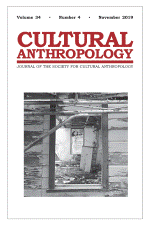
Seo, Bo Kyeong. 2019. “Populist Becoming: The Red Shirt Movement and Political Affliction in Thailand”. Cultural Anthropology 34 (4):555–579.
In this article, I explore the ways in which political subjectivities take shape through populist mobilization and dissipation. While the rise and increasing electoral success of populist movements across the world are largely attributed to charismatic leadership that conjures the will of “the people,” much less known is how people become populist subjects at a particular historical juncture. By attending to personal accounts of participation and detachment in a mass movement known as the Red Shirts in Thailand, I explore how the politics of becoming that emerges from this movement obfuscates the conventional distinction between populist and democratic identification. The articulation of populist subjects’ aspiration and affliction provides a window into the undetermined aspects of political mobilization from the realm of the ordinary.
ในบทความนี้ ข้าพเจ้ามุ่งศึกษาแนวทางการก่อร่างสร้างอัตวิสัยทางการเมือง ผ่านการมีส่วนร่วมในการเคลื่อนไหวแบบประชานิยมตลอดจนการสลายตัวของการเคลื่อนไหวดังกล่าว ในแง่หนึ่ง ความสำเร็จในการเลือกตั้งที่พบได้ในหลายประเทศทั่วโลก มาจากการเคลื่อนไหวแบบประชานิยม ซึ่งโดยมากมักจะกล่าวถึงผู้นำที่มีเอกลักษณ์ มีความสามารถในการชักจูงโน้มน้าว และสามารถตอบสนองต่อความต้องการของ “มวลชน” อย่างไรก็ตาม การศึกษาเกี่ยวกับปัจเจกหรือผู้ที่เข้าร่วมการเคลื่อนไหวแบบประชานิยมผ่านห้วงวิกฤตการณ์หรือการเปลี่ยนแปลงทางการเมืองนั้นยังมีน้อย ในการศึกษานี้ ข้าพเจ้าอาศัยเรื่องราวและประสบการณ์ของผู้ที่มีส่วนร่วมในการเคลื่อนไหวทางการเมืองของกลุ่มคนเสื้อแดงในประเทศไทยจนกระทั่งปลีกตัวออกจากการเคลื่อนไหวดังกล่าว เพื่อสำรวจการเมืองของการกลายเป็น (Politics of Becoming) ที่เกิดขึ้นภายในบริบทการเคลื่อนไหวแบบประชานิยม ทั้งนี้ ข้อค้นพบของข้าพเจ้าทำให้ความเข้าใจต่อแนวคิดเดิมที่แบ่งแยกขั่วกลุ่มอัตลักษณ์ทางการเมืองแบบประชานิยมออกจากกลุ่มอัตลักษณ์ทางการเมืองแบบประชาธิปไตยนั้นสับสนยิ่งขึ้น ข้าพเจ้าเสนอให้เราทำความเข้าใจกับความสับสนดังกล่าว รวมถึงปฏิเสธการมองว่าความหลากหลาย ไม่เป็นระเบียบ ทวิลักษณ์ของความหมาย และมิติทางอารมณ์ความรู้สึกของผู้ที่มีส่วนร่วมในการเคลื่อนไหวแบบประชานิยมนั้น เป็นปัญหาที่ต้องได้รับการเยียวยาแก้ไข หากแต่ภาวะดังกล่าวเป็นลักษณะสำคัญที่ชี้ให้เห็นว่าประชานิยมมีส่วนในการก่อร่างสร้างอัตวิสัยแบบใหม่ การทำความเข้าใจกับความมุ่งหวัง ความปราถนา และความบอบช้ำของผู้ท่ีมีส่วนร่วมในการเคลื่อนไหวดังกล่าว อาจเป็นหนทางที่จะช่วยให้เราทำความเข้าใจกับแง่มุมใหม่ๆ เกี่ยวกับการเคลื่อนไหวทางการเมือง จากปริมณฑลของคนธรรมดาสามัญ
본 논문은 포퓰리즘 운동의 확대와 해소 과정에서 정치적 주체성이 만들어지는 다양한 양상을 탐구한다. 포퓰리즘 정치의 전세계적 성장과 선거 정치에서 커져가는 영향력은 흔히 대중 혹은 인민의 의지를 결집시킬 수 있는 카리스마적 지도자의 성공과 등치되어 왔다. 그러나 과연 어떻게 대중 혹은 인민이 특정한 역사적 시점에서 포퓰리스트가 되는가에 대해서는 충분한 논의가 이루어지지 못한 바 있다. 이러한 문제의식을 바탕으로 본 논문은 태국 레드셔츠 운동의 흥망성쇠를 경유한 한 개인의 삶 경험을 탐색하고, 이를 통해 대중 운동에 기반한 되기(becoming)의 정치가 포퓰리즘과 민주주의에 대한 관습적 구분을 흐트러트리는 양상에 주목한다. 포퓰리스트 주체성을 고무하는 복잡한 정동과 의미들은 민주주의 정치를 저해하는 병폐가 아니며, 역으로 정치적 주체성의 새로운 형식들이 만들어지고 작동하는 방식을 핵심적으로 보여준다. 포퓰리스트 주체들의 변화에 대한 열망과 수난의 경험은 일상의 영역에서부터 정치적 동원의 아직 결정되지 않은, 불확정적 속성을 드러낸다.

Sancho, Guiomar Rovira. 2019. “Constelaciones performativas y multitudes
urbanas: el activismo en red, la sensibilidad feminista y la contrainsurgencia (Performative Constellations and Urban Crowds: Network Activism,
Feminist Sensitivity and Counterinsurgency).” Desacatos 61: 40-55.
La red como forma mínima de organización, ideal normativo e infraestructura de comunicación se ha convertido en el paradigma de la acción colectiva. En este artículo se analizan las formas emergentes de la protesta, propias de la era de internet: de las redes activistas a las multitudes conectadas. Las primeras construyen la potencia de articulaciones políticas transnacionales heterogéneas sin comando rector. Con la extensión de la web 2.0, las multitudes conectadas irrumpen en las ciudades y tejen constelaciones performativas que ponen en escena una sensibilidad feminista y hacker. En los años recientes, la ola global de movilizaciones explícitamente feministas convive con estrategias de contrainsurgencia digital promovidas por intereses corporativos que contaminan la comunicación.
The network as a minimum form of organization, normative ideal and communication infrastructure has become the paradigm of collective action. In this article I analyze the emerging forms of protest typical of the internet age: from activist networks to connected crowds. The first one builds the power of heterogeneous transnational political articulations without governing command. With the extension of web 2.0, the connected crowds burst into the cities and weave performative constellations that stage a feminist and hacker sensibility. In recent years, the global wave of explicit feminist mobilizations coexists with digital counterinsurgency strategies promoted by corporate interests that pollute communication.

MARTINS, Zélia, MARTINS, Irabete, BENVEGNÙ, Vinícius Cosmos. 2020. “Do maserenne miyavye ao enterro cristão: narrativas da morte Palikur-Arukwayene.” Espaço Ameríndio 14(2): 326-345.
Este artigo tem como escopo os ritos funerários do povo Palikur-Arukwayene da região do Rio Urucauá no extremo norte do Brasil. Resultado de um trabalho etnográfico, são apresentadas narrativas históricas e míticas sobre a morte e o processo funerário, desde os antigos enterros secundários em urnas de argila, até a incorporação de ritos e práticas cristãs. As transformações e ressignificações relacionados à morte, por sua vez, desvelam o longo processo histórico do contato colonial entre os Palikur-Arukwayene e as sociedades de matriz euro-ocidentais. Ademais, este é um experimento narrativo, justamente porque busca conciliar conhecimentos e vozes heterogêneas, pois é escrito por duas acadêmicas indígenas Palikur-Arukwayene e um autor não indígena. Assim, há uma sobreposição de desafios como por exemplo, diferenças de gênero, assimetrias de conhecimentos, heteroglosia e implicações éticas. Por fim, destaca-se que o registro dessas narrativas e conhecimentos tem importância para o diálogo e discussões acadêmicas, mas principalmente para as jovens gerações Palikur-Arukwayene.
This article has as its scope the funeral rites of the Palikur-Arukwayene people of the Urucauá River region in the extreme north of Brazil. It is a result of an ethnographic work and presents historical and mythical narratives about death and the funeral process, from the ancient secondary burials in clay urns, to the incorporation of Christian rites and practices. The transformations and resignifications related to death also reveal the long historical process of colonial contact between the Palikur-Arukwayene and the Euro-Western societies. Furthermore, this is a narrative experiment, precisely because it seeks to reconcile knowledge and heterogeneous voices, as it is written by two Palikur-Arukwayene indigenous academics and a non-indigenous author. Thus, there is an overlapping of challenges such as gender differences, knowledge asymmetries, heteroglosia, and ethical implications. Finally, it is important to note that the research of these narratives and knowledge is important for dialogue and academic discussions, but especially for the young Palikur-Arukwayene generations.

Bareither, Christoph. 2019. “Doing Emotion through Digital Media. An Ethnographic Perspective on Media Practices and Emotional Affordances.” Ethnologia Europaea 49(1): 7-23.
This article develops an ethnographic approach for analyzing the entanglements of digital media and emotions in everyday life. Using the practice of taking selfies at the “Memorial to the Murdered Jews of Europe” in Berlin as an example, it engages in a discussion of practice and affordance theories as well as ethnographic approaches to the study of emotions. In three related sections, it offers a particular conceptualization of “media practices” which builds upon the concept of “affordances,” an introduction to the analysis of “emotional practices,” and a section proposing the ethnographic concept of “emotional affordances.” This concept, the article argues, can serve as a key link in understanding doing emotion through digital media.
Dieser Beitrag entwickelt eine ethnografische Perspektive auf die Verflechtungen zwischen digitalen Medien und Emotionen in alltäglichen Lebenswelten. Anhand des Beispiels von Selfie-Praktiken am „Denkmal für die ermordeten Juden Europas“ in Berlin führt er praxis- und affordanztheoretische Perspektiven mit Ansätzen der ethnografischen Emotionsforschung zusammen. In drei miteinander verbundenen Abschnitten bietet der Beitrag erstens eine spezifische Konzeptualisierung von „Medienpraktiken“, die zentral auf dem Konzept der „Affordanzen“ aufbaut, zweitens eine Einführung in die Analyse von „Emotionspraktiken“, und drittens eine Konzeptualisierung des Begriffs der „emotionalen Affordanzen“, der die beiden ersten Abschnitte verbindet. Dieses Konzept, so das Kernargument des Beitrags, kann unser Verständnis für die Zusammenhänge von Emotionspraktiken und digitalen Medien signifikant bereichern.
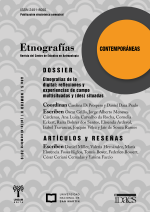
Bover, Tomas. 2019. “Destinos y reconocimiento en la Policía Federal Argentina.”
Etnografías Contemporáneas 5(9): 42-64.
En el transcurso de sus carreras los policías producen relatos y valoraciones sobre los espacios urbanos donde trabajan. El objetivo de este artículo es poner bajo la lupa tensiones y diferencias del trabajo policial entre los diversos nudos de relación que vinculan individuos, dependencias, tareas, geografías, grupos sociales y experiencias. Para esto, en la primera parte, se analizan una serie de cartografías morales, se presenta la relación entre los policías y sus destinos laborales, desde la pregunta por la especificidad de la tarea y la valoración del lugar de trabajo. En el siguiente apartado, me ocupo de los efectos de los cambios de destino laboral sobre las carreras profesionales a partir de relatos que dan cuenta de la desigual distribución de prestigio y reconocimiento, por cómo se experimenta la propia carrera en función de los lugares en que les tocó trabajar y el modo en que los policías, que tienen iguales posiciones formales en el escalafón, viven de forma diferencialmente reconocidas sus carreras según los lugares donde han realizado su labor y las tareas que allí han desarrollado. Concluyo, en primer lugar, que los policías no construyen el recorrido por la institución de forma ni idéntica ni aislada, sino respondiendo a las tensiones que presentan los diversos tejidos de los que forman parte. En segundo lugar, que la pregunta por cómo se construyen agentes sociales en instituciones policiales, no se agota en el estudio de la formación inicial sino en las transformaciones que se suceden a lo largo de las carreras.
Recognition and work destination in the Argentine Federal Police. In the course of their careers, the police produce stories and assessments about the urban spaces where they work. The purpose of this article is to highlight the tensions and differences produced between relationships that link individuals, tasks, geographies, social groups and experiences. In the first part, I address a series of moral cartographies and present the relationship between the police and their work destinations by looking at the specificity of the task and the assessment of the workplace. In the second part. I examine the effects of the changes of work destination on professional careers based on stories that account for the unequal distribution of prestige and recognition. Furthermore, I examine how a career is experienced in function of the places in which work was conducted and the way in which the police, who have the same formal positions in the ranks, differentially experience their careers according to the places where they have conducted their work and the tasks they have developed. I conclude, that the police do not construct their passage through institutions in the same way, but respond to tensions presented by the various network which they are part of. Secondly, how social agents are formed in police institutions is not limited to the study of initial training, but rather to the transformations that take place throughout their careers.
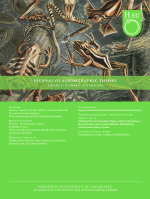
Kaur, Raminder. 2019. “The digitalia of everyday lifeMulti-situated anthropology of a virtual letterby a ‘foreign hand’”. Hau 9(2): 299-319.
The article considers the transmissions and effects of a digital letter, and its implications for multi-situated—as opposed to amulti-sited—anthropology. Multi-situated moves beyond multiplesites as supplementary contextsto the lifeflows of people,materials, and ideas, to consider multi-ontological, dynamic, and temporally contingentsituationsconstitutive of such move-ments in the making, that are embedded and/or enfolded along several intersecting planes on- and offline. The public letter waswritten collaboratively in May 2012 by activists in Britain, agreed to and signed off by supportive British members of Parliamentamong others, and addressed to the then prime minister of India and the chief minister of the state of Tamil Nadu. The letter’scontents pertained to the Kudankulam Nuclear Power Plant in south India, with concerns about mandatory procedures in theconstruction of a nuclear power station, and democratic and human rights abuses against nonviolent protestors. By focusing onthe emergence, travels, and receptive trajectories of the letter, the article makes a case for the increasing need to encompass as-pects of digital anthropology not as a discrete subdiscipline, but as an integral part of core anthropological focus and method forthe study of“onlife”entanglements—what effectively has become the digitalia of everyday life.
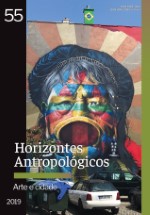
Pavoni, Andrea. 2019. “Speculating on (the) urban (of) art: (un)siting street art in the age of neoliberal urbanisation”. Horizontes Antropologicos 25(55): 51-88.
This paper addresses the current co-optation of street art into an uncritical aesthetic supplement to the process of neoliberal urbanisation, by focusing on its unresolved relation with its own site. This is done in three steps. First, via a perambulating immersion into the complexity of a specifi c site. Second, via a critical engagement with the form and politics of contemporary street art. Third, via a strategic speculation on the relation between the notions of art, urban and site. Street art’s current impasse, I argue, paradoxically depends on its incapacity to become properly urban. A urban-specifi c street art, I contend, is not a decorative veneer nor an enchanting disruption to dramatic processes of urbanisation: it is a force-fi eld in which these processes are made visible, experienceable, and thus called into question. The ‘Olympic’ works of JR and Kobra in Rio de Janeiro, and the iconoclastic performance by Blu in Berlin, are used to illustrate and complement the argument.
O artigo aborda, em três etapas, os processos atuais de cooptação da street art e sua transformação em complemento estético e acrítico ao processo de urbanização neoliberal, focando na sua relação, não resolvida, da arte com o seu próprio sítio. Primeiro, através de uma perambulação imersiva na complexidade dum sítio específi co. Segundo, através do engajamento crítico com a forma e a política da street art contemporânea. Terceiro, através duma especulação estratégica sobre a relação entre as noções de arte, de urbano e de sítio. O impasse atual da street art, argumenta-se, depende paradoxalmente de sua incapacidade de se tornar plenamente urbana. Uma street art com especifi cidade urbana não é uma superfície decorativa nem uma interrupção encantadora dos processos dramáticos de urbanização: ela é um campo de forças que torna esses processos visíveis, experimentáveis e, portanto, questionáveis. As obras “olímpicas” de JR e Kobra no Rio de Janeiro e a performance iconoclasta de Blu em Berlim são usadas para ilustrar e complementar o argumento.
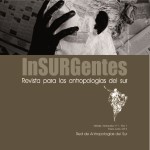
Clarac de Briceño, Jacqueline. 2019. “Revisemos algunos de los ‘huecos de la historia’”. In-SUR-Gentes. Revista para las antropologías del sur 73-124.
Este artículo tiene varios objetivos: 1) Buscar las razones que pudieron tener los historiadores al no interesarse por nuestros orígenes humanos, como si esto no tuviese que ver con la historia; 2) Comprender las razones que tuvieron Cristóbal Colón y sus compañeros por escondernos la verdadera historia de “su” descubrimiento de América y los “huecos” históricos inexplicables que dejaron en relación a Venezuela, cuando fue la primera costa americana que encontraron; y, 3) La incapacidad que mostraron pode estar na separação que operaram entre esta e a história; 2) compreender os motivos que animaram Cristóvão Colombo e seus companheiros a ocultar a verdadeira história de "seu" descobrimento da América, deixando "vazios" difíceis de explicar em relação ao seu contato com o território que hoje é a Venezuela; 3) demonstrar a incapacidade da empresa colonial em compreender os povos caribes. Os colonizadores europeus, ao representar estes indígenas como selvagens e canibais, ocultaram suas grandes habilidades para a navegação e sua insistente defesa territorial, construindo uma triste imagem legada - por conseguinte - aos seus descendentes venezuelanos e guianenses. É a memória dos povos caribes que queremos recuperar, nesta intervenção, rendendo-lhes uma homenagem após quinhentos anos do início da colonização da América.
This article has several objectives: 1) To find the reasons that historians could have when not interested in our human origins, as if this had nothing to do with history; 2) Understand the reasons that Christopher Columbus and his companions had for hiding the true story of "their" discovery of America and the inexplicable historical "gaps" that they left in relation to Venezuela, when it was the first American coast they found; and, 3) The inability they showed to understand the cultural differences and the injustice they had in front of the Caribs, by showing them as savages and cannibals, concealing that they were the most intrepid sailors and the greatest defenders of the American continent, thus building a sad reputation left to his descendants Venezuelans and Guyanese. It is his memory that we wish to recover here, after five hundred years.

Tian, Guang and Youchun Jiang. 2019. “New Economic Anthropology Paradigm with Chinese Characteristics: On Yang Tingshuo’s Interphase Operational Development Theory.” International Journal of Business Anthropology 9(1): 9-20.
The interphase (xiangji) operational development model proposed by the Chinese scholar Yang Tingshuo has made a unique contribution to localize economic anthropology in China. The way to localize economic anthropology in China is through applying the theories and methods of economic anthropology to minority areas during China's economic development; investigating and solving the problems of the minorities through effective policy making; and then by formatting the new theory models. This paper probes and summarizes the path model of localizing economic anthropology with Chinese characteristics by examining Yang’s interphase operating principle model from different perspectives.
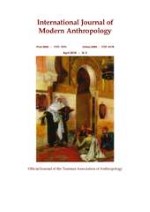
Chaabani, Hassen. 2019. “The miraculous dynamism of the Qur’an: An example of a modern reading reveals a DNA designation.” International Journal of Modern Anthropology 2(12): 15-61.
The major miracle of the Qur‟an would reside in its ability to be virtuous, valid and worthwhile for all humans living at all times and everywhere. Here, I propose three major processes which would provide the basis for this dynamism peculiar to the Qur‟an. A detailed example of one of these processes related to the scientific signs is presented. It starts from a verse that can represent a metaphor whereby DNA is designated Salsal (Arabic word refers to the swelling-expanding clay minerals). I have supported this metaphor showing that DNA and swelling-expanding clay minerals have really evident features in common. Moreover I have demonstrated the marvelous analogy that, coupled to this metaphor, permits to test its suitability by specifying that some DNA forms are similar to some potteries. Hence, according to my interpretation, this verse represents a wonderful painting that, elevated to an unusual pinnacle of creation, outlines information at the highest degree of scientific accuracy wearing a dress of superb Arabic rhetorical modes that only the light of knowledge and wisdom can penetrate it. The different research stages on this verse and other related ones show that the dynamic processes in question is not merely a dynamic progressive revelation of scientific signs during successive modern epochs, but also, if deeply analyzed, a dynamic grounding constructive for the scientific research. The present modern reading provides original interpretations based, among other things, on the making and the application of a modern approach that would permit to reach a rigorous academic level in the interpretation of the Qur‟an text in general, and the allegorical verses related to scientific subjects in particular. In conclusion, the present research will advance our understanding on the dynamism of the Qur‟an that should be shaped and implemented by re-reading Qur‟an at all times and everywhere and trying continually to correct previous erroneous interpretations due mainly to a personal and socio-cultural-political influence and/or a limited scientific knowledge of the exegetes at a given epoch.
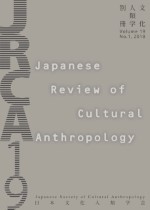
Kemiksiz, Asli. 2018. “Modeled After Life Forms: Embodiment and Ways of Being
an Intelligent Robot”. Japanese Review of Cultural Anthropology 19(1)
Recently, the notion of "embodiment" has become a crucial concept in robotics and Artificial Intelligence (AI) research. Embodiment emphasizes that a physical body is a requirement for intelligent interaction with the physical world. Based mainly on my fieldwork in a cognitive robotics laboratory in the Kantō region, this paper examines the fluid thought styles of roboticists, who draw on a range of disciplines in order to operationalize embodied intelligence in robots. These thought styles shape computational assemblages and the making of widely different robots intended to mirror particular aspects of life. The paper shows "life" to be infused into a research area that primarily deals with machines, data, and complicated algorithms, despite the fact that the robots are not themselves seen to be alive.

Kowal1, Emma and Bastien Llamas. 2019. “Race in a genome: long read sequencing, ethnicity-specific reference genomes and the shifting horizon of race.” Journal of Anthropological Sciences 97: 91-106.
The sequencing of the human genome at the turn of the 21st century was hailed as revealing the overwhelming genetic similarity of human groups. Scholars of genomics have critiqued the subsequent persistence of race-based genetic science, but were reassured that the wide availability of gene sequencing would end the use of race as a proxy for genetic difference. Once an individual’s whole gene sequence could be read, they hoped, their ethnoracial classification would become redundant. At the same time, genome science was recognising that the differences between human genomes went beyond the genome sequence to the structure of the genome itself. ‘Structural variation’ between genomes, including insertions, deletions, translocations, inversions, and copy number variations, mean that the ‘universal’ reference genome used for genome sequencing is not so universal. As conventional, ‘short-read’ sequencing wrongly assumes that all genomes have the same structure, significant genetic variation can be missed. This paper examines the twin phenomena that have been posed as a solution to the biases of short-read sequencing: ‘long-read’ sequencing and ‘ethnicity-specific reference genomes’. Long-read sequencing is a method of generating a genome sequence that can be assembled de novo rather than relying on the reference genome. In recent years, a number of countries including China, Korea, and Denmark have used long-read sequencing and de novo assembly to develop ‘national’ reference genomes. Our analysis of one ethnicity-specific reference genome project, the Korean Reference Genome (KOREF), finds that it unduly emphasises the importance of population structural variation, framed in nationalist terms, and discounts the importance of individual structural variation. We argue that the intellectual labour required to make a Korean reference genome a coherent concept works to extend the horizon of race, prolonging the temporality of the ‘meantime’ in which race remains a seemingly valid concept in genomic science.

JÄÄTS, INDREK. 2019. “FAVOURITE RESEARCH TOPICS OF ESTONIAN ETHNOGRAPHERS UNDER SOVIET RULE.” Journal of Ethnology and Folkloristics. 13 (2): 1-15.
Estonian ethnography as one of the Estonia-related disciplines was tied with Estonian nationalism from the very beginning. Defined as a science investigating mainly the material side of vanishing traditional peasant culture in the 1920s, it fitted rather well with the Soviet understanding of ethnography as a sub discipline of history. Thanks to the major cooperation projects initiated and coordinated by ethnographers from Moscow, Soviet Estonian ethnographers could continue studying Estonian traditional peasant culture. Their favourite research topics (folk costume, peasant architecture and traditional agriculture) supported Estonian national identity, but also suited the framework of Soviet ethnography. Studying contemporary (socialist) everyday life was unpopular among Estonian ethnographers because the results had to justify and support Soviet policy. They did so unwillingly, and avoided it completely if possible. Despite of some interruption during the Stalin era, ethnography managed to survive as a science of the nation in Soviet Estonia.
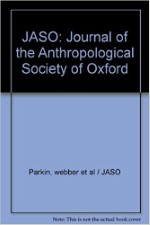
Johannes, Venetia. 2019. “Consuming the nation: food and national identity in Catalonia”. Journal of the Anthropological Society of Oxford 6(1): 1-24.
In this article, I give an ethnographic account of the lived realities of everyday nationalism by presenting some of the ways in which Catalans in northeast Spain use food to express their national identity. Due to its quotidian, essential nature, food is an ideal tool for studying the experience of nationalism in everyday life. Catalonia, in northeast Spain, provides a useful context in which to study a contemporary nationalist movement, as the recent 2017 political crisis and the independence movement that has burgeoned since 2010 have made questions of national identity a highly relevant topic of everyday discussion in the region. I will first introduce the growing literature on nationalism and food, or ‘gastronationalism’, which is the basis of my research. I also briefly discuss my methodological approach as an ethnographer. Next, I provide a brief introduction to some of the essential sauces and dishes of Catalan cuisine and the national sentiments that these foods represent. Following on from this, I discuss the gastronomic calendar, that is, the practice of associating particular foods with certain days or seasons, a notion that is shared across Catalonia and that creates recognized culinary unity. Finally, I discuss how food has been linked to the current independence movement in the region.

Nath, Suman and Subhoprotim Roy Chowdhury. 2019. “Mapping Polarisation: Four Ethnographic Cases from West Bengal.” Journal of the Indian Anthropological Society 54: 51-64.
Religious polarisation is on the rise in India especially after the BharatiyaJanata Party led National Democratic Alliance assumed power of the center in 2014. West Bengal with instances of numerous riots during the partition of the country has a history of peasant uprisefollowed by party-mediate public transactions for more than three decades. With party becoming the major mediating mechanism the state presents a picture of being relatively immune to riots and primordial identity issues. However, of late, there has been a significant rise in the number of riots and identitypolarisation. We have studied four major cases of religious polarisation and riots since 2015 to reflect on how identity issues are propagated through a mix of invented traditions, hoax and use of dubious means like employing goons and in what ways riots pay electoral dividends to the political parties.
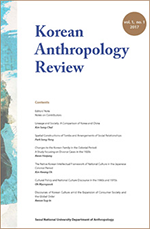
Kim, Kyunghak. 2019. “Transnational Care for Aged Parents Left Behind in Uzbekistan: A Case of Koryoin Migrants in Gwangju”. Korean Anthropology Review: A Journal of Korean Anthropology in Translation 3: 79–129. Translated by Yeonji Ghim.
The number of Koryoin (ethnic Koreans in post-Soviet states) migrants residing in South Korea is escalating as a result of the combined influence of various push and pull factors. Push factors include high unemployment and an uncertain future for the younger generation following Uzbek independence and the Uzbek government’s ethnic-centric nationalism policies. Pull factors include South Korea’s high salaries and an immigration policy open to overseas Koreans. Care for elderly Koryoin remaining in Uzbekistan after their children migrate to South Korea exhibits transnational characteristics. This study examines aspects of transnational caregiving practices for Koryoin elderly parents remaining in Uzbekistan who are cared for by their adult children who have returned to South Korea. The care practices are examined within a transnationally separated extended family network of Uzbek Koryoin. The study analyzes factors that influence the transnational care practices of Koryoin children in South Korea toward their older parents. Existing research on international migration and transnational families has mainly focused on nations where migrants settle down. Overlooked are the perspectives of elderly parents of migrants. This article aims to understand the following topics from the perspectives of older parents in particular: the emotional influence of children’s international migration; transnational life and care practices of migrant children; prospects for the reunification of migrants and their parents. Multi-sited field work was carried out in South Korea and Uzbekistan to achieve these research objectives.
우즈베키스탄 독립 이후 심각한 실업과 자녀를 위한 미래의 불투명 및 우즈벡 중심의 민족주의 정책 등의 배출요인과 한국의 고임금과 재외동포 에게 개방된 이민정책과 같은 흡인요인의 상호작용으로, 한국으로 국제이 주하는고려인의수가급증하고있다. 한국이주후고려인성인자녀의 우즈베키스탄에 남겨진 부모에 대한 돌봄은 초국적 성격을 띠고 있다. 이 연구는 초국적으로 이산된 우즈베키스탄 고려인 확대 가족 네트워크 내에서 한국에 체류하는 고려인 성인자녀의 본국에 남아 있는 노부모에 대한초국적돌봄실천양상을규명하고있다. 이연구는또한한국의성인 자녀의 노부모에 대한 초국적 돌봄 실천에 개입하는 다양한 분석 수준의 요인들이 타협되는 과정을 설명하고 있다. 국제이주와 초국적 가족의 논의 를 정착지 중심으로 함으로써 본국에 남아 있는 노부모의 시각이 간과된 기존 연구와는 달리, 이 연구는 자녀의 국제이주가 노부모에게 미치는 정서 적 영향, 자녀의 초국적 삶과 돌봄 실천, 자녀와의 재결합의 전망 등을 ‘노 부모의 시각’에서도 이해하고자 하였으며, 이를 위해 한국과 우즈베키스탄 에서 ‘다중 지역적' (multi-sited) 현지조사가 수행되었다.

Ahn, Junehui. 2019. “’우리는 모두 친구’, ‘우리는 모두 아름반’: 미국과 한국의 공동체성 사회화에 대한 비교문화적 기술 (‘We’re All Friends’ vs ‘We’re All Arum Class’: Socialization of Communality and Sociality in American and Korean Preschools)”. Korean Cultural Anthropology 52-1: 99-132.
본 논문은 미국과 한국의 유아원에서 실천되는 공동체성의 문화특수적 측면을 비교문화 적 관점에서 기술하는 것을 목적으로 한다. 구체적으로는 한국과 미국의 중산층 유아원에서 실천되는 사회화 관습을 교사들이 상상하는 공동체의 모습, 나눔의 실천, 경쟁에 대한 태도 라는 세 주제를 중심으로 비교 분석한다. 논문은 미국 유아원에서 상상하고 실천되는 공동 체에서는 개방성, 포용성, 친절함이, 한국 유아원에서는 협동, 하나됨, 소속감, 마음이 강조되 고 있음을 보여준다. 이러한 공동체에 대한 상이한 상상은 나눔과 경쟁이라는 사회화 가치 를 개념화하는 방식에도 영향을 미쳐, 미국 유아원에서 나눔은 물건이나 공간을 돌아가면서 쓰는 것으로 실천되는 반면, 한국 유아원에서 나눔이란 물건과 공간을 동시에 공동으로 사 용하는 것을 의미했다. 또한 미국 교실에서 경쟁은 친절함을 수반하는 한 사회적으로 절절 한 표현으로 허용되는 반면, 한국 교실에서 구성원들 간의 경쟁은 협력을 방해하는 부정적 인 요소로 평가되었다. 한편 한국 교실에서 집단 간의 경쟁은 지속적으로 독려되었다. 논문 은 비교문화적 분석 결과를 기반으로 인간 존재의 개별성과 집합성을 상상하고 실천하는 방 식에 존재하는 문화차를 논의한다.
In this paper, I comparatively examine the meanings of communality enacted in the preschool classrooms of the U.S. and Korea. Based on detailed ethnographic description of everyday socialization practices in two preschools, I focus on three themes: the meanings of community, ways of conceptualizing “sharing”, teachers’ attitudes towards competition. The findings indicate that while teachers in the U.S. imagine an idealized community as a place where everyone is included and treats one another kindly, Korean teachers emphasize cooperation, oneness, and loving minds as essential components of an ideal community. These different images of community lead to varying practices and attitudes towards sharing and competition. Sharing in the U.S. classroom typically means taking turns while Korean teachers, in their practice of sharing, encourage children to simultaneously use things together. Whereas teachers in the U.S. classroom regard children’s competitive talk as socially appropriate expressions as long as they accompany kindness, Korean teachers view children’s competition as hindering social cooperation, and they thereby strive to prohibit children’s competitive interactions. By articulating how so–called sociocentric values are particularized in everyday activities of both classrooms, the paper critically discusses previous dichotomous framework of personhood and suggests the needs to pay attention to the multifacetedness and inherent dynamism of human separateness and connectedness.
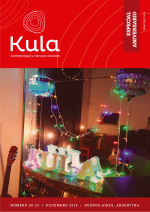
Pérez, Camila. 2019. “’Yo a investigar la cárcel no vuelvo nunca más’, o cómo (no) hacer etnografía en contextos de encierro (‘I never go back to investigate the prison’, or how (not) to do ethnography in prisons)”. Kula. Antropología y Ciencias Sociales 20/21: 54-59.
In this article I am interested in reconstructing some of the scenes from my fieldwork, carried out in 2017 in a prison located in the Province of Buenos Aires, which generated a greater contradiction during the investigation process. Observing and participating in a literacy course for a year, whose protagonists were in conditions of extreme vulnerability, questioned my desire to write an ethnography about it. The urgent need for State intervention and the absence of responses from the Penal System, managed by the Justice System and the Penitentiary Service, made me question the relevance of drafting a medium-term investigation. In this paper I seek to expose my methodological discomfort to reflect on the ways of constructing scientific knowledge in hostile contexts.
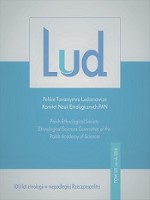
Laszczkowski, Mateusz. 2018. “ANTYCYPACJA, AFEKTYWNE EKONOMIE I TEMPORALNOŚĆ W (POST)KRYZYSOWEJ ISLANDII (Anticipation, affective economies and temporality in (post)crisis Iceland)”. Lud 103: 181-206.
Neoliberalne przeobrażenia islandzkiej ekonomii politycznej i produkcja nowych subiektywności w latach 90. XX wieku doprowadziły nie tylko do znaczących przemian społecznych i kulturowych w Islandii, ale także przygotowały podatny grunt na nadejście kryzysu ekonomicznego w 2008 roku. Jego doświadczenia i konsekwencje były oczywiście różne, aczkolwiek sam kryzys stał się także istotnym punktem na temporalnej mapie Islandii. Mimo że Islandia ponownie przeżywa dziś ekonomiczny boom, niepewna przyszłość wyłania się z teraźniejszości. Codzienne praktyki, zjawiska i znaczenia „ładują” atmosferę i stają się symptomami nadchodzącego kolejnego kryzysu. Celem tego artykułu jest zatem prześledzenie i sproblematyzowanie antycypacji, w ramach której wyłaniają się interesujące zależności pomiędzy przeszłymi zdarzeniami, teraźniejszymi doświadczeniami, a wyobrażeniami o nieznanej, aczkolwiek możliwej, przyszłości.
Neoliberal reconfigurations of Icelandic political economy and the production of new subjectivities in the 1990s led not only to significant social and cultural changes in Iceland, but also prepared a fertile ground for crisis--to-come. The crisis itself was experienced differently, yet, it has also become a significant point of reference on Iceland’s temporal map. Although Iceland is experiencing an economic boom today, an uncertain future is looming into the present. Everyday life matterings, practices and meanings “charge” the atmosphere and become symptoms of another crisis. The article aims to explore and problematise affective anticipation, which unfolds the existing dependencies between past events, present experiences and future-oriented imaginaries.
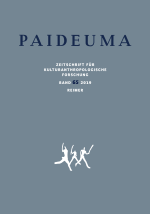
Sprenger, Guido. 2019. “DIE KONSTITUTIVEN WIDERSPRÜCHE DER GABE”. Paideuma 65: 139-156.
Debates on taxonomies of transaction types have been a fertile source for the analysis and comparison of societies. The present contribution aims to describe types of relationships in a terminology that renders visible both their differentiating features and their shared foundations, so as to make possible a more flexible use of categories. The focus is on the question of how the concept of sharing relates to the distinction between gift and commodity. Starting from the theory of the gift, the term obligation – to give, receive and return – is replaced by the term expectation. This draws attention to three constitutive contradictions of the gift that are found in modified ways in commodity transfers and in sharing. First, each transfer makes expectable a future that cannot be determined. Secondly, each transfer relates to the values of a specific community whose boundaries and coherence always remain ambiguous. Thirdly, transfers constitute persons in a social and even public manner, but they remain opaque. These contradictions define a dynamic field of types of transfer that are characterized variously by weak or strong expectations, differing ranges of value systems and different degrees of the opacity and transparency of persons.
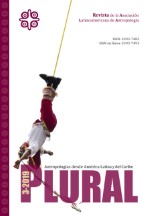
Crovetto, Gonzalo Díaz. 2019. “El valor de las palabras: control, disciplinamiento y poder en torno al conocimiento antropológico. Lecturas y reflexiones a partir del caso chileno”. Plural. Antropologías desde América Latina y el Caribe 2(3): 71-106.
En este texto entrecruzo algunos elementos claves para entender y reflexionar en torno a ciertas condiciones del trabajo académico contemporáneo. Para ello, lo que propongo en este ensayo es discutir la actuales condiciones de producción y divulgación de conocimiento escrito académico indexado y los modos establecidos que les dan forma y sentido; de disciplinamiento y control (Foucault 2012), ya no sólo desde una óptica desde las fronteras internas de la antropología o entre antropologías, sino a partir de elementos que estructuran al sistema mundo universitario globalmente hoy en día.
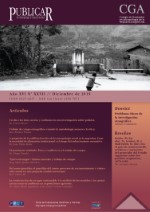
Matta, Juan Pablo. 2019. “A PROPÓSITO DE LA CODIFICACIÓN ÉTICA DE LA ANTROPOLOGÍA SOCIAL EN LA ARGENTINA. ENTRE LA NECESIDAD DE AFIRMACIÓN INSTITUCIONAL Y EL RIESGO DEL REDUCCIONISMO NORMATIVO (ABOUT THE ETHICAL CODIFICATION OF SOCIAL ANTHROPOLOGY IN ARGENTINA. BETWEEN THE NEED FOR INSTITUTIONAL AFFIRMATION AND THE RISK OF A NORMATIVE REDUCTIONISM”. Publicar en Antropologia en Ciencias Sociales 17(27): 34-50.
En las últimas dos décadas, la Antropología Social en la Argentina ha avanzado en un proceso de consolidación y ampliación notable a escala nacional. Han surgido nuevas ofertas de grado y posgrado, revistas y editoriales especializadas, multiplicado el número de eventos científicos y de redes de trabajo, aumentado la cantidad de becarios y becarias en el área y los ingresos a la carrera de investigador científico en el CONICET y desde el punto de vista institucional se ha intensificado el trabajo del colegio de Graduados en Antropología de la República Argentina y creado la Red de Carreras de Antropología de la Argentina. Este proceso se desarrolló en un contexto de profundos cambios sociales en el marco de los cuales la antropología tuvo que transitar numerosos nuevos desafíos. La posibilidad de una codificación ética de la Antropología Social en la Argentina apareció como uno de esos retos y en la actualidad el tema parece ganar terreno en distintas agendas. En este artículo me propongo reflexionar acerca de este proceso a partir de articular tres aspectos del mismo: el contexto; sus dimensiones y las potencialidades y riesgos de su concreción.
In the last two decades, Social Anthropology in Argentina has advanced in a process of consolidation and notable expansion nationwide. New offers of undergraduate and postgraduate programs, specialized magazines and editorials, the increase number of scientific events and multiplied work networks, of fellows in the area and the admission to the career of scientific researcher at CONICET and from the institutional point of view the work of the Colegio de Graduados en Antropología de la Republica Argentina has intensified and created the Red de Carreras de Antropología in Argentina. This process was developed in a context of deep social change within the framework of which anthropology had to go through numerous new challenges. The possibility of an ethical codification of Social Anthropology in Argentina appeared as one of those challenges and today the issue seems to gain ground on different agendas. In this article, I propose to reflect on this process by articulating three aspects of it: the context of the discussion; Some dimensions of the discussion and the potentialities and risks of its concretion.

Insausti, Joaquin García. 2019. “VOLVER A LAS EXEQUIAS DE PAINE GÜOR. ANÁLISIS SOCIOCULTURAL DEL KALKUTUN O AGRESIÓN MÁGICA ENTRE LOS RANKÜLCHE DE MEDIADOS DEL SIGLO XIX (BACK TO THE FUNERALS OF PAINE GÜOR. SOCIO-CULTURAL ANALYSIS OF THE KALKUTUN OR MAGICAL AGGRESSION AMONG MID-19TH CENTURY RANKÜLCHE)”. Relaciones 44(1): 155-177.
Según el relato de Santiago Avendaño, como parte de las exequias del cacique rankülche Paine-Güor, fueron asesinadas treinta y tres mujeres por ser brujas o viudas. En un análisis pionero, Alberto Rex González interpretó el sacrificio de una de las viudas del cacique como un caso de suttee, indicador del nivel de complejización sociopolítica alcanzado por las sociedades indígenas pampeanas. En este trabajo pretendemos releer estos acontecimientos con la intención de indagar acerca de las causas que permitirían explicar el asesinato masivo de brujas, aspecto que según González solamente poseía un significado ritual como parte del funeral. A tal fin, conceptualizaremos las nociones nativas sobre la agresión mágica para dar cuenta de los sentidos y obligaciones sociales implicados en el contexto específico vivido por los rankülche durante la década de 1840, además de examinar el único caso análogo de ejecución de brujos a gran escala registrado en la región pampeana.
According to Santiago Avendaño’s account, as part of the funeral of rankülche’s chief Paine-Güor, thirty-three women were executed because they were witches or widows. In a groundbreaking analysis, Alberto Rex González interpreted the sacrifice of one of the chief’s widows as a case of suttee, an indicator of the political organization level achieved by the pampean indigenous societies. In this paper we intend to re-read these events to clarify the causes that could explain the mass murder of witches, which according to Gonzalez only had a ritual meaning as part of the funeral. To this end, we conceptualize the native notions about magical aggression in order to account for the senses and social obligations involved in the specific context of 1840’s rankülche society, and also examine the only analogous case of large-scale execution of witches recorded in the pampean region.
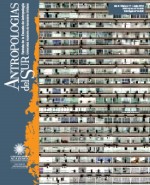
Castro, Yerko. 2019. “ETNOGRAFÍAS DE LA MOVILIDAD Y LA CONTENCIÓN DE LAS MIGRACIONES: REPENSANDO LOS MÉTODOS DE LA ANTROPOLOGÍA (Ethnographies of mobility and the containment of migrations: rethinking the methods of anthropology)”. Revista Antropologías del Sur 6(11): 17-37.
En este artículo me detengo a reflexionar sobre los desafíos metodológicos y teóricos que surgen a la hora de trabajar con los fenómenos contemporáneos de migración, refugio y desplazamiento humano. Parto, para ello, por explicar una serie de enormes transformaciones que se han producido en los últimos treinta años en el mundo, haciendo referencia a diversas situaciones en Latinoamérica, África y Europa. Con base en mi experiencia de investigación y de trabajo de campo, propongo una serie amplia de recomendaciones para tener en cuenta en los estudios contemporáneos sobre estos fenómenos. Al mismo tiempo, el artículo persigue la intención de aportar hacia una antropología de mayor alcance que pueda dialogar, proponer y cuestionar estos problemas fundamentales del mundo actual.
In this article, I stop to reflect on the methodological and theoretical challenges that arise when working with the contemporary phenomena of migration, refuge and human displacements. I start for it, to explain a series of enormous transformations that have taken place in the last 30 years in the world, making reference to diverse situations in Latin America, Africa and Europe. Based on my research experience and fieldwork, I propose a wide range of recommendations to take into account in contemporary studies on these problems. At the same time, the article pursues the intention of contributing towards a broader anthropology that can dialogue, propose and question these fundamental problems of the current world.

Valenzuela, Luciano O., Pamela García Laborde, Manuel Domingo D´Angelo del Campo and Ricardo Anibal Guichón. 2019. “TRANSICIÓN ALIMENTARIA EN POBLACIONES ORIGINARIAS DEL NORTE DE TIERRA DEL FUEGO DURANTE EL PERÍODO MISIONAL SALESIANO: UNA APROXIMACIÓN ISOTÓPICA (DIETARY TRANSITION IN NATIVE POPULATIONS OF NORTHERN TIERRA DEL FUEGO DURING THE SALESIAN MISSIONARY PERIOD: AN ISOTOPIC APPROACH)”. Revista Argentina De Antropologia Biologica. 21(1): 1-17.
La misión salesiana La Candelaria funcionó de 1893 a 1928 en el norte de Tierra del Fuego, aunque su cementerio fue usado hasta 1948. Las fuentes históricas sugieren que los nativos que la habitaron sufrieron fuertes cambios en su dieta con respecto a los cazadores-recolectores de la zona. El cambio estaría caracterizado por un gran incremento en el consumo de harina, arroz, papas y azúcar, que remplazan al guanaco como fuente principal de alimento. Nuestro objetivo es evaluar la transición alimentaria de los habitantes de la misión a través del análisis de isótopos estables de carbono y nitrógeno sobre huesos (colágeno, apatita) y dientes (dentina, esmalte) de 23 individuos exhumados del cementerio. Los valores de δ15N en colágeno (δ15Nc) y de δ13C tanto en colágeno (δ13Cc) como en apatita (δ13Ca) de individuos del cementerio resultaron más bajos que los valores publicados para la región para períodos pre-contacto. Dentro del cementerio, los valores de δ15Nc y de δ13Ca resultaron más bajos que los de δ15Nd (dentina) y de δ13Ce (esmalte), pero no hubo diferencias entre valores de δ13Cc y δ13Cd. Los valores de δ15Nd y δ13Cd resultaron significativamente más bajos que los valores de colágeno para períodos pre-contacto. Estos resultados son consistentes con la hipótesis planteada por las fuentes históricas y sugieren un desequilibrio en la dieta, con una mayor proporción de carbohidratos y una menor proporción de proteínas animales en los habitantes de la misión con relación a los cazadores-recolectores de Tierra del Fuego de períodos pre-contacto.
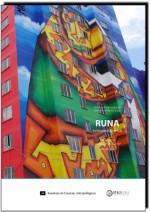
Villalta, Carla and Soledad Gesteira. 2019. “Prácticas de circulación coactiva de
niños y niñas en la Argentina. Tramas institucionales, jerarquías sociales y derechos”. Runa 40(2): 149-167.
Este artículo analiza las tramas sociales e institucionales en las que se asentaron las “prácticas de circulación coactiva de niños” y los significados que actualmente las rodean. A partir de la reconstrucción de un caso, sucedido en 1976 en un paraje de la Patagonia argentina pero conocido recién en 2015, nos interesa problematizar los mecanismos que hicieron posibles las prácticas de transferencia forzada de niños y su ocultamiento a lo largo del tiempo. A su vez, analizamos la construcción de una particular grilla de inteligibilidad basada en el derecho a la identidad, así como en los nuevos sentidos adjudicados a la niñez. Esta grilla, que permitió que una sospecha se tornara denuncia pública, primero, y luego causa judicial, fue construida haciendo uso de un repertorio categorial, institucional y activista en torno a los derechos humanos en la Argentina que confirió específicos sentidos locales a los derechos de niños y niñas.
This article analyzes the social and institutional frames in which the «practices of coercive circulation of children» and the meanings that currently surround them were established. From the reconstruction of a case, that happened in 1976 in a spot of the Argentine Patagonia but only known in 2015, we are interested in problematizing the mechanisms that made possible the practices of forced transfer of children and their concealment over time. At the same time, we analyze the construction of a particular grid of intelligibility based on the right to identity as well as on the new meanings assigned to children. This grid, which allowed a suspicion to become first a public denunciation and later a judicial cause, was built using a categorical, institutional and activist repertoire related to human rights in Argentina that conferred specific local senses on the rights of children and girls.
Este artigo analisa as tramas sociais e institucionais em que foram estabelecidas as “práticas de circulação coercitiva de crianças” e os sentidos que as cercam atualmente. A partir da reconstrução de um caso ocorrido na Patagônia argentina em 1976, mas conhecido apenas em 2015, interessa-nos problematizar os mecanismos que possibilitaram as práticas de transferência forçada de crianças e sua ocultação ao longo do tempo. Neste processo, analisamos a construção de uma grade particular de inteligibilidade baseada no direito à identidade, bem como nos novos significados atribuídos às crianças. Essa grade, que permitiu que uma suspeita se tornasse primeiro uma denúncia pública e, em seguida, um caso judicial, foi construída a partir de um repertório categorial, institucional e ativista de direitos humanos na Argentina que conferiu sentidos locais específicos para os direitos das crianças.

Lewis, Eshe. 2019. “When Black Female Victims Aren’t Seen as Victims”. Sapiens.
Article (English): https://www.sapiens.org/culture/notoneless-black-female-victims/
Article (Spanish): https://www.sapiens.org/culture/ni-una-menos/

White, Thomas Arthur John. 2019. “CHRISTIANITY AND CLIMATE CHANGE ADAPTION: SEA-LEVEL RISE AND RITUALISING VILLAGE RELOCATION IN FIJI”. Sites: A Journal of Social Anthropology and Cultural Studies 16(1): 44-69.
Development studies are ambivalent about the relationship between climate change adaption and Pacific Christianity. Biblical belief about Noah’s covenant and the End Times are understood to undermine risk perception, while church membership is seen to threaten cross-denominational cooperation, hampering adaptive capacity. Yet the communicative reach and charismatic authority of Pacific churches remain the envy of development specialists working on climate change. This focus on belief and institutional capital, however, neglects how Christian ritual practice can orientate and stabilise faith communities. Drawing on fieldwork in rural Fiji investigating village migration due to coastal flooding from sea-level rise, this paper shows how ritual practice strengthens community resilience when responding to climate change. In unidogoloa, villagers employed the Old Testament myth of Exodus to (re)create ritual responses to vent the emotional/spiritual trauma of leaving their ancestral home. Whereas in the nearby village Vunisavisavi, such ritual responses have been lacking and village relocation remained problematic.
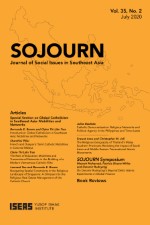
Hoffstaedter, Gerhard. 2019. “Arrested Refugee Mobilities: Optics as Bordering Techniques in Malaysia”. SOJOURN: Journal of Social Issues in Southeast Asia 34(3): 521-546.
The concepts of mobility and optics have become important tropes for our understanding of how human movement across borders and within countries is increasingly shaped by bordering techniques. Focusing on three ethnographic case studies, I argue that refugees in Malaysia have their mobility arrested through a range of optics acting upon them. Depending on socio-economic background, ethnicity and religion, they find varying self-protection methods to make life in the present bearable and the future imaginable and viable. Refugees face an array of bordering techniques in Malaysia, such as surveillance by the state, in some cases by their home country, by their own refugee community and self-surveillance.

Rennesson, Stéphane. 2019. “Wrestling Beetles and Ecological Wisdom: How Insects Contribute to the Cosmopolitics of Northern Thailand”. Southeast Asian Studies 8(1): 3-24.
In Northern Thailand, a game that builds upon an uncanny cooperation between human beings and rhinoceros beetles (xylotrupes Gideon) has developed at a high level of refinement and institutionalization. Beetle-fighting is even being widely presented as a marker of the local identity and a local ecological wisdom. In this paper, I will show how it is not so much the coleoptera that symbolize a harmonious connection built by human populations with their natural environment, but rather a question of what happens in the intimate relationship between human beings and insects. Following the way players build on the great alterity between them and the insects, this article will address how the technical and conceptual handling of the beetles shapes pragmatically an original cosmology. It will pay specific attention to the ways players try to connect with their coleopteran by projecting human traits on them and adopting their communication mode. Through these, we can examine how beetles force humans to reflect on their engagement in the world, up to the point where it brings this game onto the stage of political ecology.
Un jeu qui s’appuie sur une coopération entre êtres humains et scarabées rhinocéros (xylotrupes Gideon) a atteint dans le nord de la Thaïlande un niveau de raffinement et d’institutionnalisation inégalé. Les combats de coléoptères sont même devenus une sorte de marqueur de l’identité locale et une sagesse écologique locale. Je montre que ce n’est pas tant le scarabée rhinocéros qui symbolise une harmonie le lien construit par les populations humaines avec leur environnement naturel, mais de la co construction d’une relation ludique entre humains et insectes. En examinant la manière don’t les joueurs parient sur la grande altérité entre eux et les scarabées, cet article montre comment la manipulation technique et conceptuelle des coléoptères façonne pragmatiquement une cosmologie originale. Nous accordons une attention particulière à la façon dont les joueurs essaient de se connecter à leurs scarabées à la fois en projetant des traits humains sur leurs champions et en adoptant leurs modes de communication. Ce faisant, nous verrons comment les coléoptères forcent les humains à méditer sur leur engagement dans le monde, jusqu’au point de faire entrer ce jeu sur la scène de l’écologie politique.

Reeves, Madeleine. “The Queue: Bureaucratic Time, Distributed Legality, and the Work of Waiting in Migrant Moscow”. Suomen Antropologi: Journal of the Finnish Anthropological Society 44(2): 20-39.
The contemporary Russian migration regime is grounded in an artificial shortage of legal labour. For migrant workers from ‘visa-free’ states of the former Soviet Union, becoming and remaining documented requires mastering the queue as a distinct social and institutional form. Exploring the everyday tactics of ‘occupying the queue’ among migrant workers from Kyrgyzstan, this paper brings an existentially sensitive perspective on migration into conversation with an anthropology of legal time, attentive to the ways in which being ‘stuck in motion’ emerges through the conjunction of competing tempi of work, life, and legalization. A focus on the queue as social form draws attention to the embodied labour of synchronization: the physical and social effort entailed in integrating the disjunctive temporal regimes of paid work and documentary verification in contexs of legal precarity. In so doing, the article critically interrogates assumptions of ‘empty time’ in recent anthropological work on waiting.
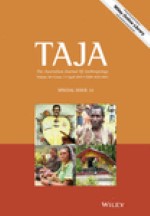
Knauft, Bruce. 2019. “Finding the good: Reactive modernity among the Gebusi, in the Pacific, and elsewhere” The Australian Journal of Anthropology 30 (1): 84-103.
Conditions of being left behind in economic and political terms are keenly felt in many areas of Melanesia and the wider Pacific Islands—as is more generally the case in many developing and also developed countries. Insofar as modern expectations portend a future that should be improving, it is unsurprising that modern expectations or entitlements are throttled by economic and political downturns across many cultural and class conditions. Ensuing circumstances are not so much ‘post’ modern—since ideals of modern progress are not given up—as they are ‘reactively’ modern in cultural terms. In this context, a poignant and longstanding sense of backwardness in many areas of the insular Pacific arguably provides a cultural bellwether of increasingly widespread perceptions and reactions elsewhere. Among the Gebusi of Papua New Guinea prolonged economic downturn under conditions of marginality and remoteness has thrown people back on their own material and cultural resources. Despite a general absence of cash economy, monetisation or fiscalisation of ‘work’ increasingly orchestrates social relations. So, too, in the absence of government presence, police, or courts, mechanisms of dispute mediation have become locally developed and effectively elaborated, including through rhetorics of monetary compensation that were previously undeveloped in indigenous contexts of person-for-person exchange both in marriage and in death. In selected ways, reactive modernity among Gebusi has features that seem salutary—evoking an ‘anthropology of the good’—despite and even because of Gebusi’s politicoeconomic marginality. Drawing on work by Ortner, Robbins, and others, the larger relevance of this development reframes the relevance of Dark Anthropology and an Anthropology of the Good.

Francia, Betty. 2019. “TREKKING, RAFTING Y KAYAK. DEPORTISTAS/ACTIVISTAS, NATURALEZA Y PRÁCTICA DEPORTIVA EN CONTEXTO DE CONFLICTO SOCIO AMBIENTAL (TREKKING, RAFTING AND KAYAK: ATHLETES/ACTIVISTS, NATURE, AND SPORTS IN THE CONTEXT OF SOCIAL AND ENVIRONMENTAL CONFLICT)”. Trama 10: 26-36.
En el ámbito de la antropología, así como en otras disciplinas, el interés por los modos en que la gente se relaciona con el medio ambiente no es nuevo; la antropología especializada en este campo se ha dedicado a estudiar esta relación los últimos cien años, aproximadamente. En el marco de la tesis doctoral en Antropología en la que se produce este artículo, la autora propone conocer esas relaciones y en este documento aborda la práctica deportiva extrema en el territorio donde se encuentra activo el conflicto socioambiental #NoAltoMaipo, desde el año 2008. El área metropolitana de Santiago de Chile es el territorio en el que está en construcción el Proyecto Hidroeléctrico Alto Maipo. El conflicto es liderado por la agrupación Coordinadora Ciudadana de los Ríos del Maipo, quien alerta sobre la amenaza para el ecosistema de la cuenca del río y la calidad y disponibilidad del agua para Santiago. El deporte y las actividades recreativas en esa zona son uno de los principales atractivos y fuente de ingresos anuales para la economía local, que depende en gran medida de los más de 2.500.000 turistas que llegan cada año al Cajón del Maipo. Este artículo pretende reflexionar en torno al vínculo entre activismo ambiental y deportes extremos en esta zona. El diseño metodológico utilizado es etnografía clásica.
In the field of anthropology, as well as in other disciplines, the interest in the ways in which people relate to the environment is not new, specialized anthropology in this field has been dedicated to studying this relationship for the last one hundred years or so. Within the framework of the doctoral thesis in Anthropology where this article arises, the author proposes to know these relationships, in this document she addresses the extreme sports practice in the territory where the socio-environmental conflict #NoAltoMaipo has been active since 2008. The metropolitan area of Santiago de Chile is the territory where the Alto Maipo Hydroelectric Project is under construction. The conflict is led by the Citizen Coordinator of the Ríos del Maipo who warns about the threat to the ecosystem of the River basin and the quality and availability of water for Santiago. Sports and recreational activities in that area are one of the main attractions and source of annual income for the local economy that depends largely on the more than 2,500,000 tourists who arrive every year at the Cajon del Maipo. This article aims to reflect on the link between environmental activism and extreme sports in that area. The methodological design was about classical ethnography.

Machado, Lia Zanotta and Antonio Motta. 2019. “Brazilian Anthropology in times of intolerance: The challenges of confronting neoconservatism”. Vibrant 16: 1-19.
The present article analyzes the challenges Brazilian anthropology faces in the current political context, marked by setbacks, intolerance, repression, and censorship relative to previously achieved democratic advances. Here, we reflect upon different dynamics in the field of anthropology in diverse political conjunctures in Brazil over the last five decades. The first section of the article analyzes the historical context in which Brazilian anthropology became institutionalized, during the military dictatorship. We then highlight the social engagement of anthropologists in the struggle for human rights during the re-democratization of Brazil in the 1980s and anthropologists’ participation (together with the groups they study) in the gradual implementation of “identity policies”. The second section evaluates the impact of these changes in the field of anthropology and the dilemmas experienced by anthropologists in the new context of political confrontation. The concluding section analyzes and interprets the neoconservative movement and the strategies and challenges anthropology faces in contemporary Brazil.
Este artigo se propõe analisar os desafios da antropologia brasileira diante do contexto político atual, marcado pelo retrocesso, intolerância, repressão e censura diante de avanços democráticos anteriormente conquistados. Para isso reflete sobre diferentes dinâmicas no campo da antropologia, em diferentes conjunturas políticas no Brasil, nas últimas cinco décadas. Na primeira parte, empreende uma análise do contexto histórico em que a antropologia brasileira se institucionaliza em plena época da ditadura militar. Em seguida destaca o engajamento social de antropólogo(a)s na luta pelos Direitos Humanos, no momento de redemocratização do país, na década de 1980, e a implantação gradativa das “políticas de identidades” com a participação de antropólogo(a)s junto aos grupos que estudam. Na segunda parte, busca avaliar o impacto dessas mudanças no campo da antropologia e os dilemas vividos pelos antropólogo(a)s no novo contexto de enfrentamento político. A última parte analisa e interpreta a movimentação neoconservadora e as estratégias e desafios para antropologia no Brasil contemporâneo.
